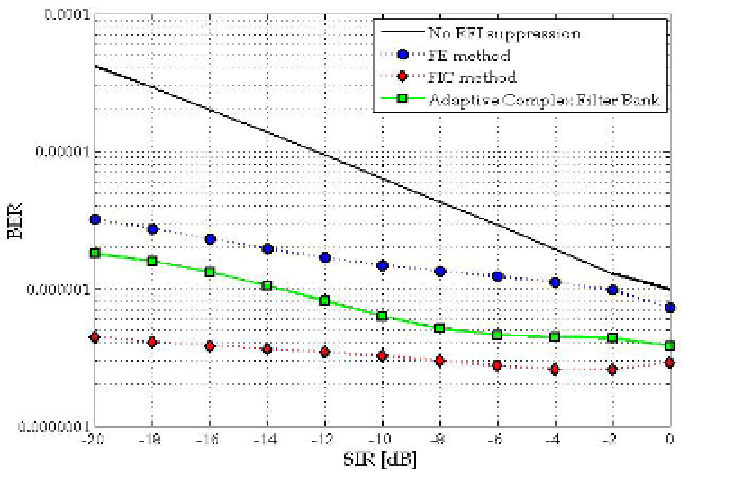Image Processing Reference
In-Depth Information
al, 2004). The FIC method is implemented as a two-stage algorithm with the filtering process
applied independently at each receiver input. First, the complex RFI frequency is estimated
by finding the maximum in the oversampled signal spectrum per each receiver's input.
After that, using the Maximum Likelihood (ML) approach, the RFI amplitude and phase are
estimated per input. The second stage realizes the Non-Linear Least Square (NLS)
Optimization Algorithm, where the RFI complex amplitude, phase and frequency are
precisely determined.
The
third
RFI mitigation approach is based on the
complex
DSP parallel adaptive complex
filtering technique. A notch ACFB is connected at the receiver's inputs in order to identify
and eliminate the RFI signal. The adaptation algorithm tunes the filter at each receiver input
in such a way that its central frequency and bandwidth match the RFI signal spectrum (Lee
et al, 2007).
Using the above-described general simulation model of a MIMO GDSL system (Fig. 11),
different experiments are performed deriving the BER as a function of the SIR. The RFI is a
complex single tone, the frequency of which is centrally located between two adjacent DMT
tones. Depending on the number of twisted pairs used 2, 3 or 4-pair MIMO GDSL systems
are considered (Fig. 12) (Poulkov et al, 2009).
The GDSL channels examined are subjected to FEXT, NEXT and a background AWGN with
a flat Power Spectral Density (PSD) of - 140 dBm/Hz.
The best RFI mitigation is obtained when the
complex
DSP filtering method is applied to the
highest value of channel diversity, i.e. 4-pair GDSL MIMO. The FIC method gives the
highest performance but at the cost of additional computational complexity, which could
limit its hardware application. The FE method has the highest computational efficiency but
delivers the lowest improvement in results when SIR is low: however for high SIR its
performance is good.
(a)


